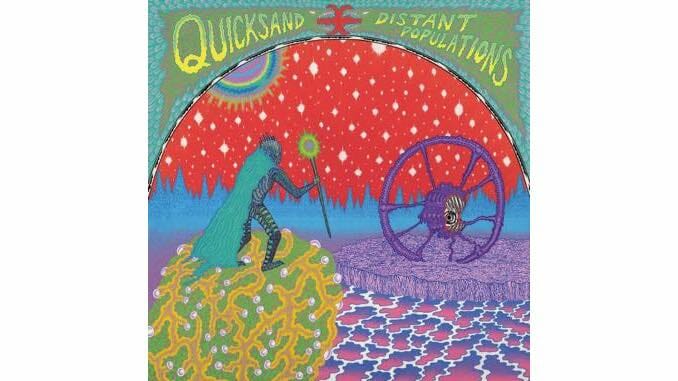With Distant Populations, Quicksand Drift Further from Their Legendary Brand of Angst
The veteran post-hardcore outfit embrace maturity on their second post-reunion effort, both gaining and losing something in the process

When Quicksand first got together in 1990, the collective resumé of the then-upstart group’s members included more than half a dozen hardscrabble New York-area hardcore outfits like Youth of Today, Gorilla Biscuits and Burn. As a result, Quicksand screeched into existence shrouded in an aura of preordained street credibility that persists to this day. However, frontman/bandleader Walter Schreifels—a scene veteran by the ripe old age of 20—set out to buck hardcore convention with a more open, melodic, flexible sound that incorporated elements of metal. Believe it or not, his intention was actually to create a rap-metal hybrid. Quicksand didn’t quite turn out that way, but Schreifels and his bandmates landed on a formula that bypassed barriers and then some.
Right out of the gate, Quicksand’s style appealed to supporters of independent-minded groups steeped in underground ethics who nevertheless saw hardcore as a jumping-off point—Fugazi, Jawbox, Helmet, Drive Like Jehu and just about any band tagged as “post-hardcore.” The appeal extended even further, though. Quicksand’s 1993 full-length debut Slip, one of only two albums they released before calling it quits in ‘95, also resonated with fans of metal-adjacent acts who harbored no reservations about gunning for maximum commercial success—tourmates, for example, like Rage Against The Machine, Living Colour and White Zombie.
Quicksand’s crossover potential didn’t stop there, either. At times, thanks in large part to the ingenious heroics of former lead guitarist Tom Capone, the band’s atmosphere-heavy style verged on space rock. And though it would be somewhat off-target to label Quicksand as emo, per se, if you were to draw a line from Rites of Spring to Sunny Day Real Estate to The Get Up Kids, it’s hard to deny the commonalities. It should come as no surprise, then, that Distant Populations, Quicksand’s second post-reunion album (and fourth overall), charts a course that’s light years away in outlook and temperament from the angsty style that secured the band’s legend.
Quicksand were never purists, so it stands to reason that maturity would reflect new shades of a group who possessed manifold shades to begin with. And when the band finally released long-awaited new material with 2017’s Interiors, the shift towards a more vaporous, introspective style felt like a radical departure from the gnashing attack of 1995’s Manic Compression—about what you’d expect following a 22-year gap between records. But since Distant Populations treads much of the same ground as Interiors—gauzy mixes render the two albums virtually indistinguishable—it’s now evident Quicksand can no longer stay one step ahead of time forever.
On Distant Populations, in fact, Schreifels, bassist Sergio Vega and drummer Alan Cage find themselves facing the same conundrum as the rest of us, which is that age takes away as much as it gives. “I remember when we were 17 / There was nothing we wouldn’t dare,” Schreifels sings on “EMDR,” an admirable attempt to marry Quicksand’s vintage muscular riffing style to a more sensitive frame of mind. Schreifels’ ghostly wail on the chorus recalls Chino Moreno of the Deftones—who were themselves enamored by Quicksand early on (so much so that they eventually recruited Vega to join them in 2009). But the slosh of compressed cymbals and melodic singing raises the concern that Quicksand may have fallen into the featureless miasma one encounters on pre-curated playlists. If “EMDR” popped up unexpectedly in the listening queues of longtime fans, it’s questionable whether they would even recognize who it was.
Which isn’t to say that Schreifels, Vega and Cage aren’t aging gracefully. The melancholy mood of “Brushed,” an electro-tinged acoustic number, arguably gets as enveloping as the unbridled roar of the old stuff. The clipped drum loop actually captures Cage’s ever-taut, assertive style, while Vega positions his rumbling bass in such a way that it doesn’t smother Schreifels’ haunted vocal. Despite his underground pedigree, Schreifels doesn’t hold back when accessibility is his goal. If you listen to “Hostage Calm,” a song intended for an unfinished third album that broke the band up a second time in 1999, it’s clear that Quicksand had at least an outside shot of conquering the airwaves at the height of the ”modern rock” format’s dominance.
-

-

-

-

-

-

-

-

-

-

-

-

-

-

-

-

-

-

-

-

-

-

-

-

-

-

-

-

-

-

-

-

-

-

-

-

-

-

-

-








































